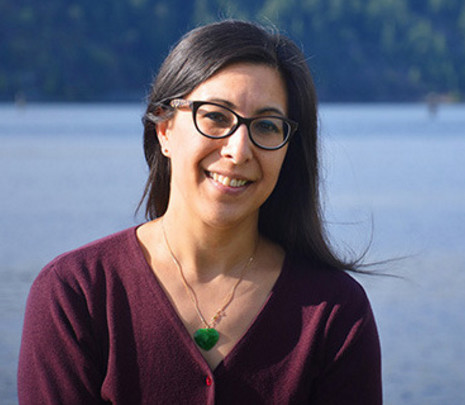Tawney Lem
About
 As the Executive Director of West Coast Aquatic’s management association, Tawney is responsible for organizational oversight and supporting the implementation of the Coastal Strategy – an integrated ocean management plan, which is only the second of its kind in Canada – including ecosystem based management and governance.
As the Executive Director of West Coast Aquatic’s management association, Tawney is responsible for organizational oversight and supporting the implementation of the Coastal Strategy – an integrated ocean management plan, which is only the second of its kind in Canada – including ecosystem based management and governance.
Tawney has a strong background in facilitation, board development, and strategic planning, with a focus on finding shared solutions within and between governments and sectors. In her previous consulting practice, she was involved in the promotion of sustainable natural resource use through Forest Stewardship Council certification system auditing and research roles. She has also worked extensively with over 30 indigenous groups to build their governance and organizational capacity.
Tawney has a Bachelors degree in Political Science (with a concentration in municipal and provincial policy) from the University of British Columbia, and a Certificate in Dialogue and Civic Engagement from Simon Fraser University.
Place
The West Coast of Vancouver Island (WCVI) is home to a rich and unique marine ecosystem that is of infinite value to residents, Canadians, and the international community. As a truly renewable resource, it provides; food, energy, water, tourism opportunities, recreation, commercial fisheries, transportation routes, and a setting for expressing culture and gaining knowledge.
The WCVI area stretches along approximately 300 kilometers, as the local bald eagle flies, from Brooks Peninsula, Northwest of Kyuquot Sound, to Southeast of Sheringham Point including Port Renfrew. The WCVI marine ecosystem area extends from the high water mark on the coast to the 200 nautical mile limit of the Exclusive Economic Zone or the international boundary in the Juan de Fuca Strait.
WCA’s geographic scope reflects the ‘Ha-houlthee’ (territorial wealth) of fifteen Nuu-chah-nulth Nations. It is divided into several regional districts with most of the WCVI located in Alberni-Clayoquot, which has 30,664 residents across an area of 6,597 square kilometres. The Cowichan Valley Regional District, Capital Regional District and Strathcona Regional District also have governance boundaries that include portions of the region.
Work
Key initiatives that West Coast Aquatic is working on include:
- Marine Spatial Planning – Comprised of over 200 map layers and a narrative component, this tool describes the characteristics of an area, an area’s suitability for various uses and activities, and an area’s vulnerability to a variety of stressors. Based on the best available information about activities (e.g. fishing, aquaculture, tourism/recreation, marine transportation) and values (ecological, social and cultural), the MSP is a decision support tool for governments and First Nations, and will promote management that is ecosystem-based and inclusive of local knowledge.
- Monitoring – Initiating development of a social and ecological monitoring program that will assess the ‘state of the coast’ and guide both management and stewardship decisions.
- Salmon strategies developed at multi-sector roundtables that address harvest management, stewardship and production.
- Bridging multiple sectors’ interests in regional environmental and social issues.
West Coast Aquatic
West Coast Aquatic (WCA) seeks to produce innovative solutions to coastal concerns, and strengthen the understanding and relationships between parties that share a common interest in the health and wealth of aquatic resources, businesses, and communities. West Coast Aquatic is comprised of: a consensus-based collaborative governance board, ratified under Canada’s Oceans Act, that brings together governments, key sectors and communities to develop consensus-based outcomes for marine resources on the West Coast of Vancouver Island; a management association that supports the activities of the governance board; and a charitable organization that administers stewardship activities.
WCA connects people to decisions and to resources.


